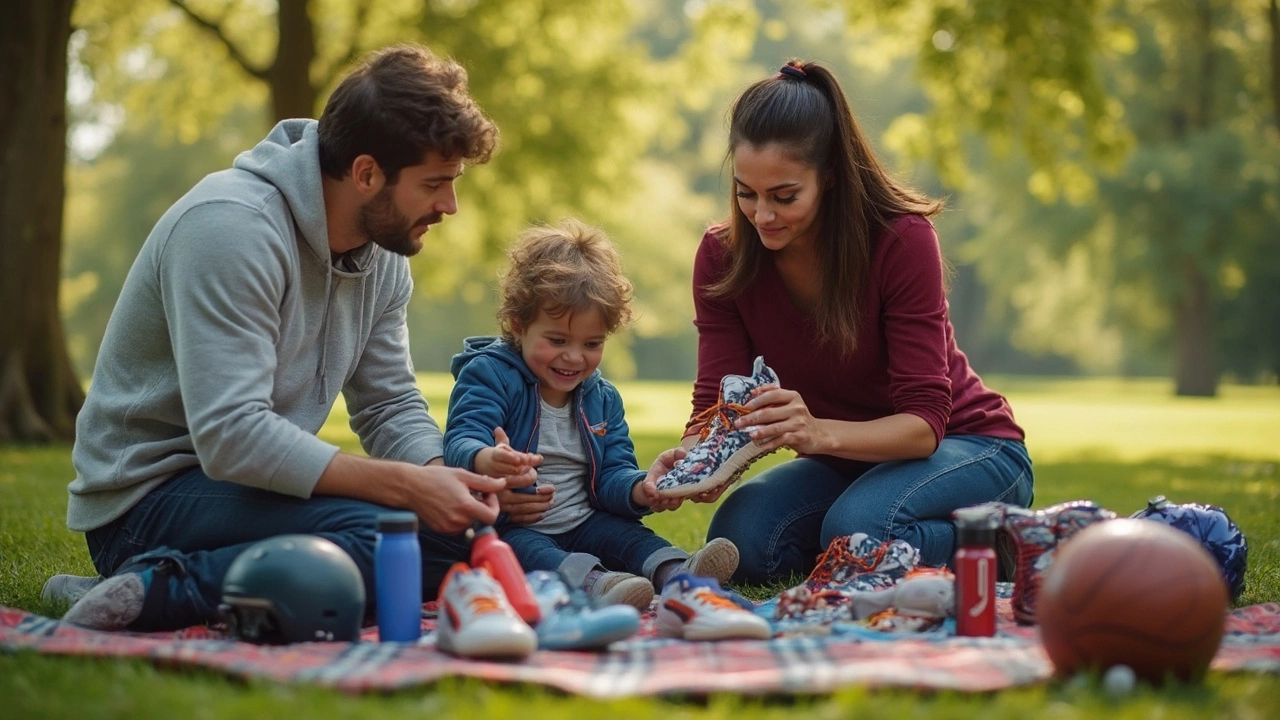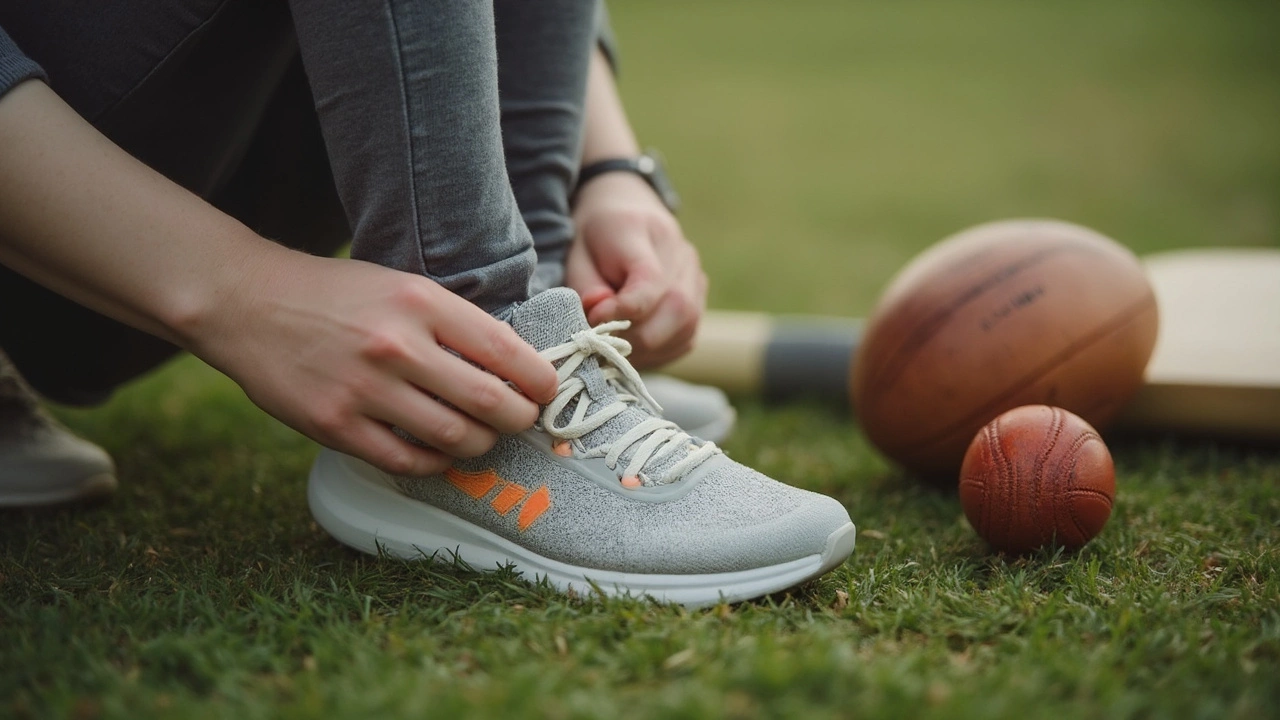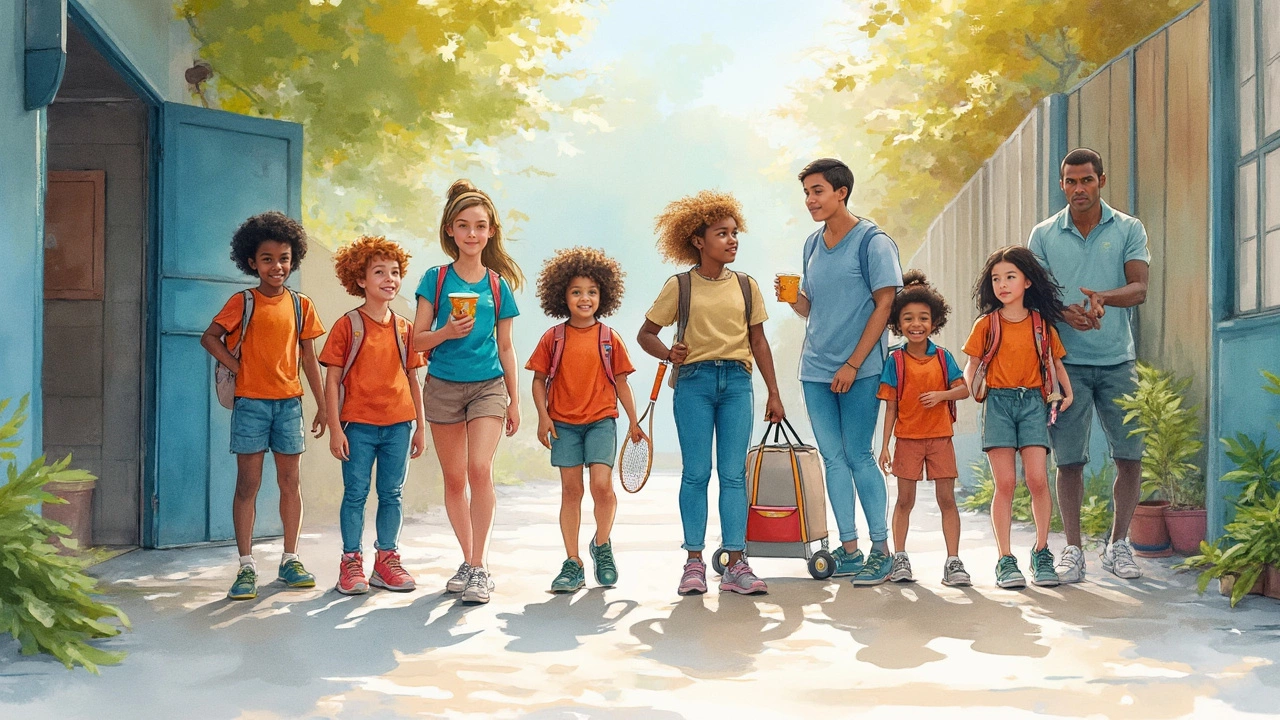Sports Equipment: What Do You Need to Get Started (and Stay Safe)?

Buying sports equipment can be a bit of a maze, especially when you’re juggling a family and a budget. So which gear do you really need, and what’s just hype? The answer depends on the sport, but there are some basics everyone should know before heading to the store or clicking ‘add to cart.’
The right shoes, for example, change everything—blisters, rolled ankles, and sore feet can all be avoided with a properly fitted pair. Trying to run in old sneakers or cycling in sandals is like building a house with toy bricks—it just doesn’t work. Focus on getting shoes made specifically for your sport whenever possible. They’re designed for the movements, surface, and impact you’ll face, whether it’s sprinting around a basketball court or climbing a muddy soccer pitch.
Another thing to look out for is breathable clothing. It’s tempting to throw on whatever’s in your drawer, but sweat-soaked cotton gets heavy and uncomfortable fast. Go for lightweight, moisture-wicking fabrics that keep you dry and help regulate your temperature during long or high-intensity sessions. My son Callum’s soccer practice made this pretty clear after he came home with grass stains and a tee that weighed more than his backpack. Now, he wears quick-dry shirts, and laundry days are a lot less scary.
- Why Equipment Matters More Than You Think
- Essentials Every Athlete Needs
- Sport-Specific Must-Haves
- Safety Gear That Actually Works
- Pro Tips for Buying and Maintaining Sports Equipment
Why Equipment Matters More Than You Think
If you think skipping out on good sports equipment isn’t a big deal, check the stats—over 2 million kids head to emergency rooms every year in the U.S. because of sports injuries. Quite a few could have been avoided with the right gear. For grown-ups, that number isn’t much better. Good equipment isn’t just about the fancy brand or looking cool. It’s about playing safe, performing better, and having more fun.
Take something as simple as a helmet. In soccer, you might not need one, but in cycling or skateboarding? It can literally save your life. The Consumer Product Safety Commission found that quality helmets reduce serious head injuries by up to 85% in bike crashes. That’s not just a guess; it’s a huge difference. Cleats stop you from face-planting on wet grass, mouthguards protect your smile, and the right shin guards mean fewer bruises (ask any soccer kid).
Performance matters too. Proper sports gear can make you faster, help you last longer in the game, and even boost your confidence. If you’re using old, worn-out shoes, you’ll probably feel it in your knees and back, especially after a tough workout or match. Ever try batting with a wooden spoon instead of a real bat? It’s almost as bad as wearing running shoes to play tennis. Sports equipment is made for a reason: to match the moves and needs of the game.
Think of essential sports items as your toolkit. If you use the wrong tool, the job gets a lot harder, and sometimes you even break something (sometimes yourself). This isn’t about buying every gadget you see at the store. It’s about picking what actually helps you stay safe and enjoy the game.
| Sport | Main Injury-Prevention Gear | Injury Reduction (%) |
|---|---|---|
| Football | Helmet, pads | 60 |
| Cycling | Helmet | 85 |
| Soccer | Shin guards, cleats | 45 |
| Baseball | Helmet, face guard | 70 |
So next time you think of skipping new equipment or using hand-me-downs that have seen better days, remember: gear isn’t just extra. It’s the foundation of safe, fun, and really enjoyable play.
Essentials Every Athlete Needs
No matter the sport, there’s a basic toolkit of sports equipment that every beginner or weekend athlete relies on. These aren’t just suggestions—they’re the building blocks that help you avoid injuries and enjoy the game. Get these sorted, and you’ll be miles ahead.
- Proper Footwear: Shoes matched to your sport make a huge difference. For example, running shoes are built for forward movement and shock absorption, while tennis shoes focus on side-to-side support. Bad shoes can cause problems like knee pain or shin splints. Did you know that nearly 60% of beginner sports injuries are linked to wearing the wrong shoes? Invest here first.
- Comfortable, Breathable Clothing: Ditch anything cotton if you can. Clothes made with polyester blends or moisture-wicking fabrics help keep you dry and comfortable. This is especially important if you play outdoors or in long matches.
- Reusable Water Bottle: Staying hydrated isn’t just good advice—it’s essential for performance. Dehydration can kill your energy fast. Most athletes should aim for at least 16-24 ounces of water per hour during intense activity. Set a timer if you forget to drink when you’re active.
- Personal Towel: Wiping sweat off your face or hands (or your kid’s!) helps you grip equipment better and keeps you more comfortable mid-game.
- Supportive Undergarments: Don’t overlook good sports bras or compression shorts. They hold everything in place, help with muscle fatigue, and can save you from awkward moments.
Here’s a quick comparison of basics you can check off for most sports:
| Item | Why It Matters |
|---|---|
| Shoes | Prevents injuries; improves stability and performance |
| Apparel | Keeps you dry and comfy; prevents overheating |
| Water Bottle | Essential for hydration |
| Towel | Helps grip and hygiene |
| Supportive Undergarments | Reduces muscle soreness and discomfort |
Think of this as your starter checklist. Nail these first, and you’ve cleared the biggest hurdles to getting on the field or court with confidence.

Sport-Specific Must-Haves
Saying you need “the right sports equipment” is like saying you need the right clothes. Sure, but what are you actually doing? Each game or activity has its own must-haves, and skipping them can wreck your experience or even bench you with an injury. Here’s what matters for the most popular sports, in plain terms:
- Soccer: Go for firm ground cleats if you play outdoors and turf shoes for indoors. Shin guards aren’t optional—they save your legs from those nasty kicks and missed tackles. A quality soccer ball also makes backyard practice way better for kids like Callum.
- Basketball: Invest in supportive basketball shoes; they protect your ankles and help with traction. If you play a lot outdoors, pick up a ball meant for concrete so it doesn’t wear out in a week.
- Swimming: Grab a suit made for laps, not lounging. Goggles keep your eyes happy (and let you see your lane). If you swim competitively or train often, a silicone cap keeps hair out of the way and cuts down on drag.
- Cycling: A helmet isn’t just suggested—it’s a must. Padded shorts can take the sting out of long rides. If you get serious, clip-in shoes and cycling gloves help a lot with grip and comfort.
- Tennis: Rackets come in all shapes—choose one with the right grip size for your hand and suited for your skill level. Tennis-specific shoes stop you from sliding around on the court, especially during those quick side-to-side movements.
Want to see just how much gear can matter for performance and safety? Check this out:
| Sport | Non-Negotiable Gear | Key Reason |
|---|---|---|
| Soccer | Cleats, shin guards | Prevent slips, leg injuries |
| Basketball | Specialized shoes | Ankle support, shock absorption |
| Cycling | Helmet | Head protection |
| Swimming | Goggles, suit | Clear vision, unrestricted movement |
One last tip: If you’re not sure what to buy, ask the coach or chat with parents who’ve done it before. You’ll hear about real hits (and mistakes) that Google won’t mention. Also, if you’re shopping for fast-growing kids, like Talia, consider quality used gear or local swap events. Trading up as they grow saves money and keeps gear in play.
Safety Gear That Actually Works
Not all sports equipment out there actually helps you. Some of it is just for show, but some pieces are true game-changers when it comes to staying safe and playing better. Let’s talk about what gear really makes a difference and how you can choose wisely for yourself or your kids.
The basics? Helmets, mouthguards, pads, and good quality shoes are non-negotiables for certain sports. Helmets cut the risk of head injury in half according to the CDC—especially in football, cycling, and skateboarding. As a mom, I wouldn’t dream of sending Talia off to field hockey without a helmet and a mouthguard (which literally cost less than a fast-food meal, and are worth every penny).
- Helmets: Always check for a safety certification, like CPSC or ASTM, especially for biking and team sports. A helmet should fit snug and not slide around. Replace it after any big impact—even if there’s no visible crack.
- Mouthguards: A mouthguard does more than protect your teeth. It can also reduce risk of concussion during hard hits, at least in contact sports. Go for boil-and-bite ones unless your dentist recommends a custom-fitted type.
- Knee, Elbow, and Shin Pads: These are a must for skateboarding, rollerblading, hockey, and soccer (hello, flying legs and clattering sticks). Cheap pads slip and don’t offer real protection, so check for solid padding and a snug fit.
- Protective Eyewear: Glasses or goggles help in sports like squash, racquetball, or even outdoor cycling where debris is a risk. Polycarbonate lenses are the gold standard—shatterproof and lightweight.
- Proper Footwear: Good shoes give grip, support, and help prevent ankle injuries. Cleats for outdoor sports like soccer and studded shoes for baseball matter more than you may think.
Here’s something you probably haven’t seen—wearing the right protective gear actually keeps kids in the game longer. There was a 2023 youth sports study in the U.S. that found teams with proper, well-fitted safety gear (like certified helmets and pads) had 30% fewer serious injuries over a season compared to those with mismatched or worn-out sports equipment. Makes sense why coaches always harp on checking gear each week.
One last tip: store your safety gear correctly. Don’t toss helmets in the trunk or pads in a damp gym bag for days. Moldy or warped equipment won’t protect you. Air out everything after use. Check for cracks, rips, or broken straps every few weeks. A few minutes of care means your essential sports items will actually do their job when it counts.

Pro Tips for Buying and Maintaining Sports Equipment
Picking out sports equipment doesn’t have to mean blowing your wallet or chasing the newest gear on the shelf. The best approach? Focus on quality over quantity. Let’s be real: well-made equipment not only works better, it lasts way longer. That’s cash saved in the long run, especially if you’ve got kids in multiple activities like Callum and Talia.
First, always try before you buy. If you can, visit a local store and handle the gear. Check if a tennis racket feels balanced, or if a baseball glove actually fits your hand—not some “one size fits all” nonsense. Big sporting goods stores even let you do a few practice swings or kicks. If you’re shopping online (because who isn’t?), stick to brands with solid return policies so you’re not stuck with gear that isn’t right for you.
Here’s a little secret: you don't need to buy everything new, especially for fast-growing kids. Gently used equipment from consignment shops or sports swaps is great, especially for pricier items like hockey skates or pads. Kids just outgrow stuff at lightning speed. Talia’s gymnastics leotards practically have a revolving door at our house.
“Don’t skimp on shoes, helmets, or anything central to safety. For everything else, secondhand is often just as good, if not better—since it’s already broken in.” — Coach Avery Richardson, youth soccer league coordinator
Once you’ve got your sports equipment, keeping it in good shape is everything. Most gear just needs a quick clean after each use—wiping down shin guards, airing out cleats, and never (seriously, never) leaving wet equipment zipped up in a bag. That’s not just to avoid stink; sweat breaks down materials faster than you’d think.
- Read care labels: Some things are fine in the washer, but others—like helmets or gloves—need special care. Detergent residue can break down foam padding or leather.
- Dry thoroughly: Damp spots are breeding grounds for mold. Open up bags as soon as you get home, and let stuff air out before storing.
- Regular check-ups: Inspect your gear for loose stitches, flat spots, cracks, or tears. Fixing a small tear or tightening a screw early keeps stuff safe and in working order.
When it comes to choosing beginner sports gear for adults or kids, keep it simple. Get the basic bits right, take care of them, and only upgrade when you truly need to. According to a 2023 report by the Sports & Fitness Industry Association, regular maintenance extends sports equipment life by 30%, saving the average family about $150 a year. That’s more snacks for the kids’ games—or maybe a new pair of running shoes for yourself.
| Tip | Potential Savings |
|---|---|
| Buy secondhand gear | Up to 60% |
| Maintain equipment regularly | 30% longer lifespan |
| Shop end-of-season sales | 20-40% off retail |
Stock up smart, care for your things, and you’ll spend less time stressing about gear—and more time actually enjoying your sport.
